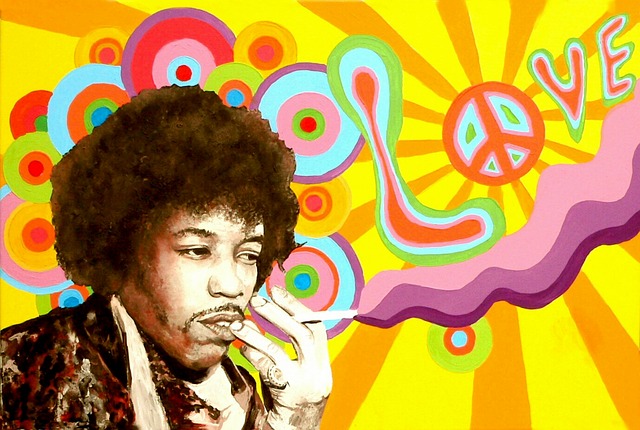Picture it. Virginia. Summer, 1619.
A farmer stares out over his land. He experiences an itch that never ceases. It’s not a metaphorical itch. It’s a very real itch.
He scratches at his collar and other unmentionable places as he surveys his land. It’s less amber waves of grain and more likely green fields of tobacco. But among his crops, there is hemp.
In the 1600s, Growing Hemp Was All the Rage
And nobody was hiding those cannabis plants in the back forty. In fact, in 1619, Virginia passed a law making it mandatory to grow hemp on every farm in the colony.
Of course, there was nothing suspect about this particular strain of cannabis plant. Hemp is not marijuana, after all. And in the 1600s, it was used to make everything from rope to paper to cloth. Hence the aforementioned farmer’s itchy shirt and trousers.
As such, hemp was an important product in the New World as the colonies were being established. It was actually considered a form of currency in Virginia, as well as Pennsylvania and Maryland – although it had no sinister street name.
Eventually, cotton and its lovely plush softness pushed hemp out of the way. It was just as versatile and didn’t leave people with unattractive rashes.
Then Cannabis All But Disappeared
Well, in the United States, that is.
Never mind that over in Central Asia and the Middle East, folks had been enjoying the effects of smoldering cannabis seeds/flowers or smoking hashish since ancient times. Like, back in 800AD. Even the Quran which forbade alcohol and other intoxicants did not prohibit cannabis. At least not specifically.
It wasn’t until 1000 years later that an Irish doctor studying in India made a very important discovery. The munchies. Yep. Sir William Brooke O’Shaughnessy found that cannabis extracts could help lessen stomach pain and vomiting in people suffering from cholera. And it was a big deal.
The Return of Cannabis to the U.S.
By the late 1800s, cannabis extracts containing THC were making their way from Europe across the pond to the U.S. where they were sold in pharmacies and doctors’ offices to treat stomach problems and other ailments. This new strain of cannabis plant called marijuana was becoming an increasingly popular ingredient in medications and tinctures.
Eventually, it would move from the medical community into the public. And by the early 1900s, Mexicans who had immigrated to the United States to flee the violence of the Mexican Revolution introduced the recreational practice of smoking marijuana to American culture. It was especially well received in the 1930s by the hepsters – i.e. the “hep cat” black jazz community. Cab Calloway even paid his tribute with the song “Reefer Man.”
A bunch of Mexican immigrants and black people using drugs!? This, of course, did not fly with the uptight bureaucrats resistant to any change. Fortunately for them, it was the Depression era and they were seeking a scapegoat for the deeply crippled country. Marijuana and the communities who used it fit the bill perfectly. So they got right to work demonizing them.
By 1931, twenty-nine states had outlawed marijuana. The Marijuana Tax Act was passed six years later in 1937, in essence making the plant illegal in the United States. Criminalizing marijuana had begun.
The 1950s – Leave It to Beaver vs. the Beatniks
Even though the squares got their way, many were still concerned that their children would be lured by the “devil’s weed.” So to further instill fear, Encyclopedia Britannica produced “Reefer Madness” to warn kids about the dangers. Although the production is now regarded as hilarious drivel, it is a haunting example of the blinding ignorance of the 1950s.
Meanwhile, the Beat Generation saw nothing great about an America shamelessly criminalizing a disproportionate number of non-white people. This sizable counter culture was all about eschewing such straight-laced ignorance in favor of openness, exploration and other more bohemian ideals. This included experimenting with drugs. Particularly marijuana. And by the 1960s, widespread use of recreational marijuana, though still illegal, was experiencing a serious awakening.
Marijuana – Post 1960s
The decades that followed the 1960s were a see-saw of stricter enforcement and the passing of mandatory sentencing laws, balanced by repeals of some of those laws and efforts at legalization.
But we’re inching ever closer.
Today, nine states and Washington, DC, have legalized marijuana for recreational use for adults over the age of 21. And with the MANY now proven benefits of using cannabis for health reasons, medical marijuana is legal in 30 states, with Oklahoma getting on board this past June.
Best of all?
Support for marijuana reached a new high (pun intended) when a a recent Gallup poll in 2017 showed that 64% of Americans favor legalization. Finally, a majority. Even a majority of Republicans back it.
A great America would be a “woke” America. We’re not there yet. But where marijuana legalization is concerned, it sure seems like we’re finally moving in the right direction.
Let’s just hope that history doesn’t repeat itself.
